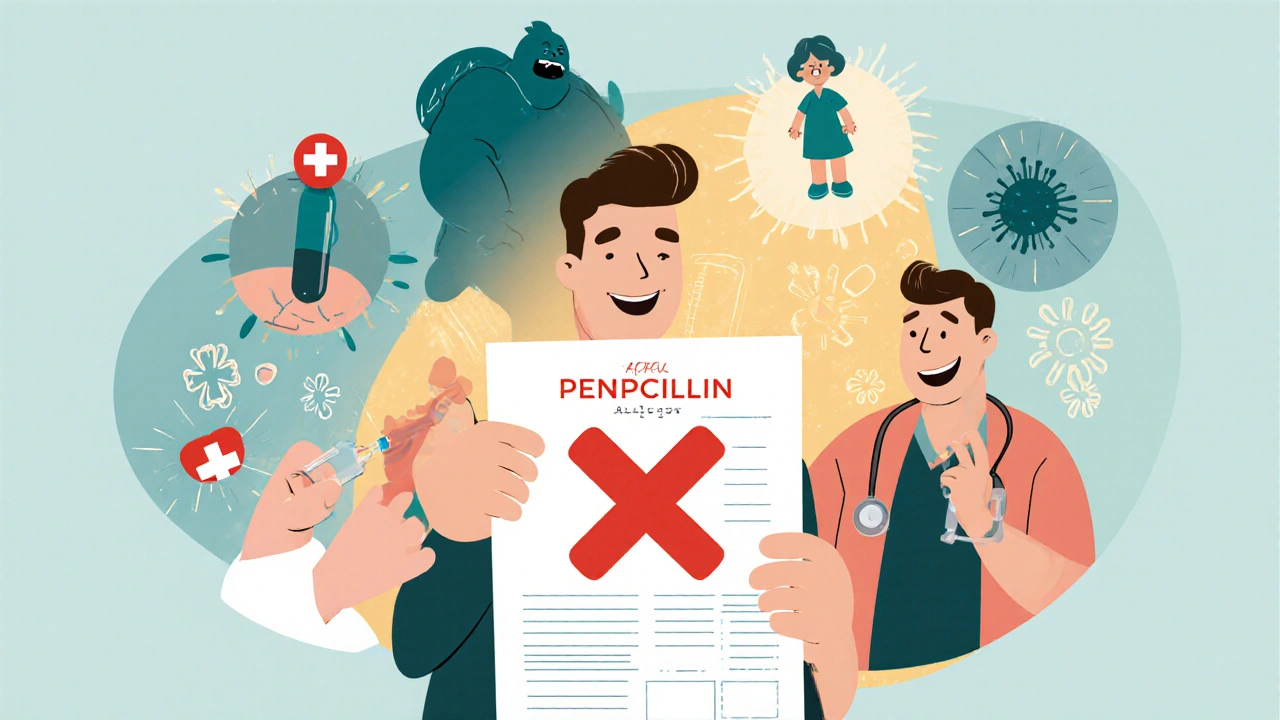Most people labeled penicillin-allergic aren’t truly allergic. Accurate testing can safely remove this label, reducing risky antibiotics, lowering costs, and preventing deadly infections like C. diff.
When someone says they’re allergic to penicillin, a common antibiotic used to treat bacterial infections. Also known as beta-lactam allergy, it’s one of the most frequently reported drug allergies in the U.S. But here’s the catch: more than 90% of people who think they’re allergic to penicillin aren’t. They might’ve had a rash as a kid, heard a parent say it, or were told years ago without proper testing. That mislabeling leads to worse outcomes—like being put on stronger, costlier, or riskier antibiotics that can cause side effects, longer hospital stays, or even antibiotic resistance.
That’s where penicillin allergy de-labeling, the process of safely removing an incorrect allergy label through medical evaluation comes in. It’s not about ignoring allergies—it’s about correcting false ones. Doctors use a simple two-step approach: first, a detailed patient history, then often a skin test or oral challenge under supervision. If the test is negative, the patient is cleared. No more unnecessary avoidance. No more being stuck with drugs like vancomycin or clindamycin when penicillin would’ve been safer and cheaper.
This isn’t just for adults. Kids with suspected penicillin allergies are being re-evaluated too, because growing up with an incorrect label means missing out on better treatment options for ear infections, strep throat, or pneumonia. Hospitals and clinics across the U.S. are now running formal de-labeling programs, and primary care providers are getting better at referring patients. The goal? Reduce unnecessary antibiotic use and improve patient care.
Related to this are drug allergy, an immune system reaction to a medication, and antibiotic allergy, a subset of drug allergies that affects how we treat infections. These aren’t just medical terms—they’re real barriers to effective care. A mislabeled allergy can mean choosing a drug that’s more likely to cause diarrhea, kidney stress, or C. diff infections. De-labeling flips that script.
Some people worry about testing. What if I react? The truth is, serious reactions during testing are rare, and they’re managed in controlled settings. Most patients feel relieved afterward—not just because they can take penicillin again, but because they finally understand their own body better. You don’t need to live with a label that doesn’t fit you.
Below, you’ll find real stories and science-backed guides on how to talk to your doctor about testing, what to expect during the process, and how de-labeling connects to broader issues like antibiotic safety, medication choices, and shared decision-making. This isn’t theory. It’s something you can act on—and it might just change how you’re treated the next time you’re sick.

Most people labeled penicillin-allergic aren’t truly allergic. Accurate testing can safely remove this label, reducing risky antibiotics, lowering costs, and preventing deadly infections like C. diff.